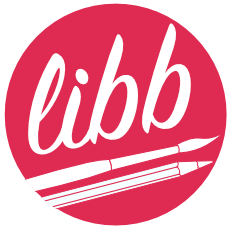I’m aware of Debian’s reputation for not having the most up-to-date software in its repository but have just noticed that Thunderbird is on its current version. Which makes me ask:
When does Debian update a package? And how does it decide when to?
I’m particularly interested in when it will make available the upcoming major release of GIMP to 3.0.
Some software is so complex and difficult that Debian does not maintain it on their own, and instead follows the upstream release cycle.
Browsers are one such example, and as you’ve discovered for me, Thunderbird is probably another.
Also, please do not recommend testing for daily usage. It does not receive critical security updates in a timely manner, including for things that would effect desktop users. Use stable, Sid, or another distro. Testing is for testing Debian ONLY, and by using Debian Testing, you are losing the advantage of immediate security fixes that come from literally any other distro.
I’m aware of Debian’s reputation for not having the most up-to-date software in its repository
Yes, it’s a stable distro. Contrary to what most Linux users think, that term only means that the distro is unchanging. That means only necessary updates are released (security fixes for example).
when it will make available the upcoming major release of GIMP to 3.0.
Maybe in the next version, if the gimp release happens soon enough it gets tested.
Just use an external package manager like flatpak to install fresh packages. The only reason I could run MX (Debian) for about a year was because I installed almost every user package through nix, and used Debian ones for the system packages.
it usually updates most packages when a new patch version is released (eg 2.3.1 -> 2.3.2). besides that, they will not update packages to new releases that add features
there are some special cases where it might choose to update more often. debian uses firefox esr by default, but it will update to a newer esr version no matter what, for security reasons. the same must be true for thunderbird.
They get all the patches and minor upgrades in a timely fashion, similar to other distros. The major version updates do not come as readily though.
You can always use APT Pinning to grab GIMP and its dependencies from
testingwithout touching the rest of the system.Or you can just run
testingorsidas your base system. My gaming rig is based ontestingbut pulling Mesa and video derivers fromexperimentalandsidand I haven’t had any issues with it. Been running it for about 2 years now this way.The rule is that apps are only updated for security reasons. Not because of new features.
So, new versions of apps may (or may not) be added to the next version of Debian.
@Churbleyimyam@lemm.ee @ARuy91305DGgrQiOZ6.linux@lemmy.ml I am guessing they have a short list of security-critical packages that they always keep up-to-date and at the latest versions, for things like SuDo and OpenSSL. Firefox, Chrome, and Thunderbird are so critical to end-user security, they probably have those on the list as well. But I am only guessing.
Usually if you want more recent versions of an application, you can install a FlatPak via FlatHub.
You can also install the Guix package manager on Debian, which has its own separate local repository that does not interfere with installed Debian packages. Guix usually has more recent packages, and it also makes it easy to install package dependencies and build the latest developer releases of applications from source code.
GIMP 3.0 will come with the next Debian release.
When will that come out?
When it’s ready.
You can get a bit of an idea where in the release process we are by looking at this graph:

Where the green and blue lines dip close to zero, there was a new release.
Next release is probably planned for October 2025.Between releases, packages are only updated when it’s relevant for security or to fix bugs.
Thunderbird and Firefox are a bit of an exception. Those programs are so complex that backporting security fixes to the current Debian version isn’t feasible. So Debian is forced to ship the new version when security issues in the current version become known.
And they’re also not needed on servers, so the reduced stability doesn’t affect them.Approximately 100 years once or twice, depending on how urgent it is.
Gimp 3 is scheduled to be released in May, around the time that Debian 13 is about to come out. Given that Gimp is never on time, and that Debian will only include stable software in their repo, you won’t see Gimp 3.x on Debian for another 2.5 years (the next major release).
However, don’t fret. There’s a way to run Gimp 3, even now, without overwriting the 2.10.x version of Gimp that comes with Debian: https://github.com/ivan-hc/GIMP-appimage/releases That’s how I run gimp 3 on my Debian too, I just download the 3.0-rc1 .appimage file, make it executable, and it’s up and running.
Flatpack is one of the official ways to install the RC:
If you have Flatpack on your system, go to https://www.gimp.org/downloads/devel/ and click the GNU/Linux option, there will be a button to install it.
If the button doesn’t work, the page says:
Flatpak additional instructions
If the link above doesn’t open your software installer, install with following command:
flatpak install --user https://flathub.org/beta-repo/appstream/org.gimp.GIMP.flatpakrefRun with following command line:
flatpak run org.gimp.GIMP//betaTo update:
flatpak updateNote: If you installed both the stable and beta repositories, the desktop (menus, etc.) will see only one version at a time. To make sure your desktop sees the development version, run this command:
flatpak make-current --user org.gimp.GIMP betaOr respectively to restore the stable version as the visible GIMP application:
flatpak make-current --user org.gimp.GIMP stableYou may also create shortcuts running specifically one of the other version.






